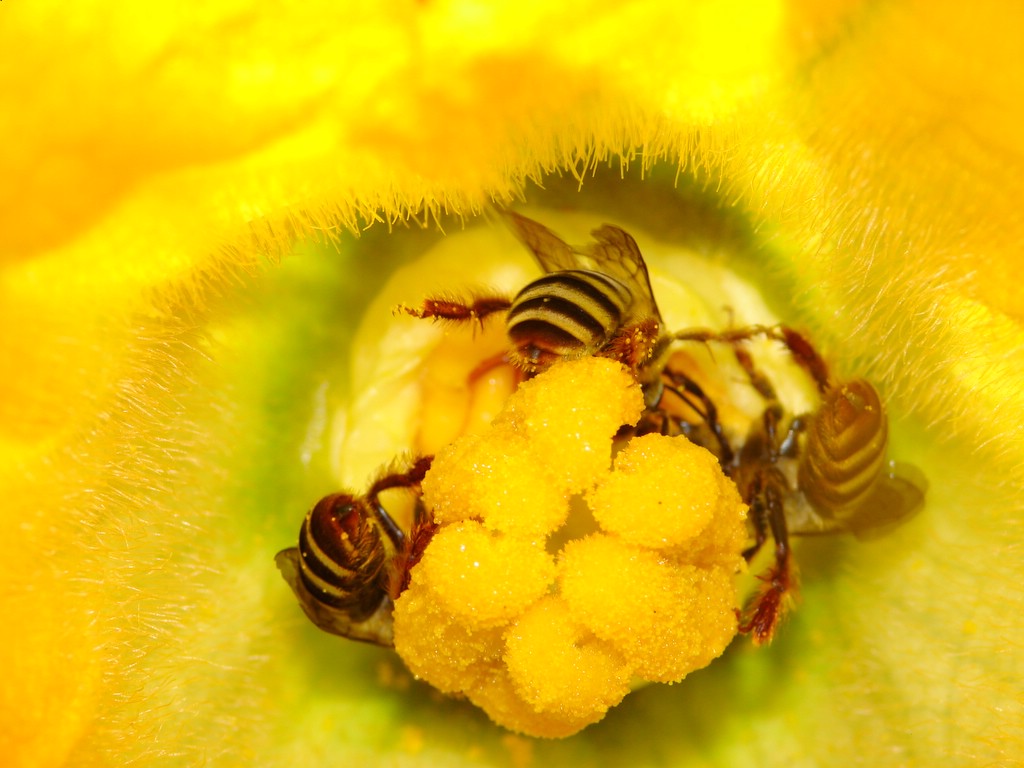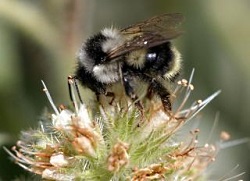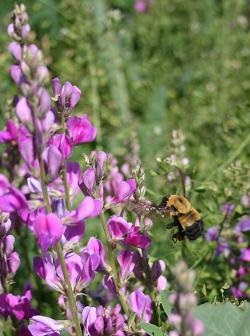
Courtesy of and
Copyright © 2010 Linda Kervin
Happily, few of our native bees have much venom or any inclination to sting; in part because they are solitary nesters. In contrast, honeybees and bumblebees are social and in defense of home will deliver memorable stings.
All bees visit flowers to sup nectar for energy. Females also collect protein-rich pollen to feed their offspring. Grain and hay fields, pavement and buildings have all displaced native plant communities, but our flower gardens can become valuable cafeterias for local bee populations. Because bees find their favorite flowers by their color or scent, a bee garden can also appeal to people.
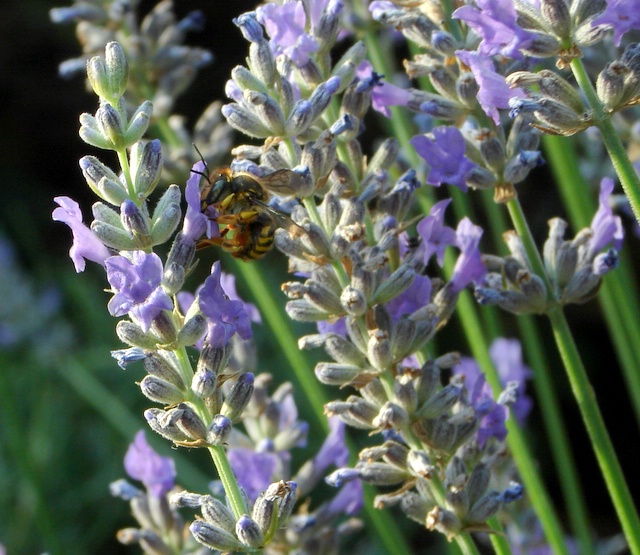
Courtesy of and
Copyright © 2010 Jim Cane
Different bees prefer different kinds of flowers. Many bees are attracted to members of the pea family, such as vetches, clovers and locoweeds. Bees appreciate sunflowers and their kin as well as lavender and many other herbs. On the other hand, some plants have been so altered by plant breeders that they no longer feed bees. Examples include doubled flowers like marigolds, flowers with ruffles like petunias and some other common bedding plants.
Please consider our important pollinators when you are choosing what to plant in your garden. You will be rewarded by increased fruit and vegetable yields while surrounded by beautiful blooms.
This is Linda Kervin for Bridgerland Audubon Society.
Credits:
Photos: Courtesy and Copyright 2010 Jim Cane and Linda Kervin
Text: Jim Cane and Linda Kervin, Bridgerland Audubon Society
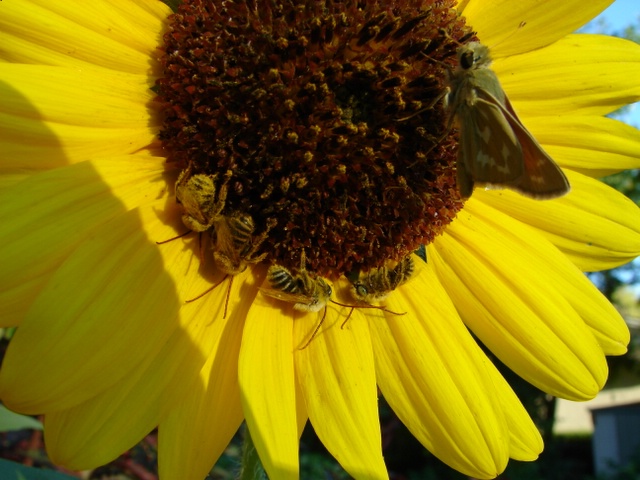
Sleeping on Sunflower
Courtesy of and
Copyright © 2010 Jim Cane
Additional Reading:
https://www.nbii.gov/portal/server.pt?open=512&objID=222&mode=2&in_hi_userid=2&cached=true
https://www.ars.usda.gov/main/site_main.htm?modecode=54-28-05-00
https://extension.usu.edu/htm/publications/publication=10414
Crop domestication facilitated rapid geographical expansion of a specialist pollinator, the squash bee Peponapis pruinosa, Margarita M. López-Uribe, James H. Cane, Robert L. Minckley, Bryan N. Danforth
Proc. R. Soc. B 2016 283 20160443; DOI: 10.1098/rspb.2016.0443. Published 22 June 2016https://rspb.royalsocietypublishing.org/content/283/1833/20160443.abstract
Bumblebee Watch, https://www.bumblebeewatch.org/
Bumble Bee Watch is a citizen science project through the partnership of The Xerces Society, the University of Ottawa, Wildlife Preservation Canada, BeeSpotter, The Natural History Museum, London, and the Montreal Insectarium.






